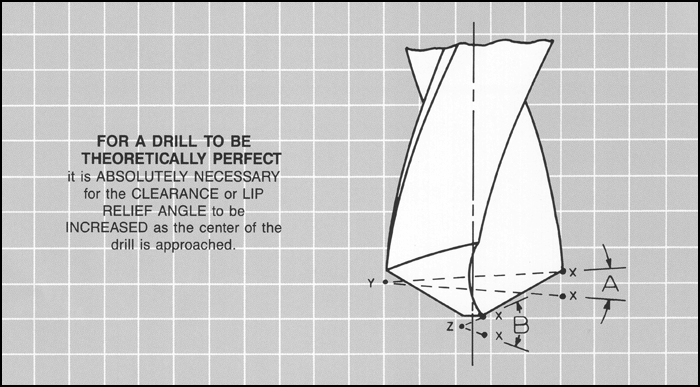- Requires far less horse power
- The reduced torque and thrust dramatically improves drilling operations
- Considerably less wear and tear on your drills
- Oliver: “The Geometrically Perfect Point.”
“We’ve cut our drill grinding time in half but with a greater performance on drill life.”
Bill McQueen, Brandywine Machine Company Inc. (“BRAMCO”)
“Oliver produces a much better point, resulting in cost savings for my customers.”
Brent Bolin, Owner, Acra Tex Industries Inc.

Technical Background:
The reason the lip relief angle must be varied along the cutting edge is illustrated diagrammatically above. The rate of feed, or spindle and drill advance per revolution, is constant and is show in exaggerated form as the distance from x to x.
The helical path traversed by the outer end of the cutting lip of the drill in one revolution is indicated by projection x-y-x. The helical path traversed by the inner edge of the cutting lip is indicated by projection x-z-x. Since the distance x-x, or the pitch of these two helical paths, is the same in both cases, angle B of the smaller diameter helix is greater than angle A of the large diameter helix.
The minimum theoretical clearance necessary for the drill to penetrate is one-half the angle of these helices. Therefore, the clearance or lip relief angle must increase from the periphery to the center of the drill. The essential variation in lip relief angle is one of the principal objections to hand grinding of drill points which would only produce a constant clearance angle. |

